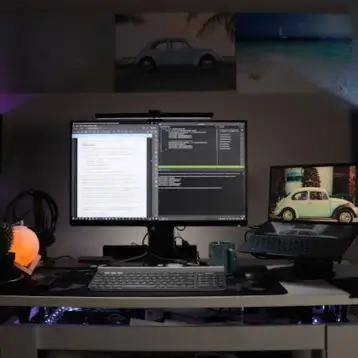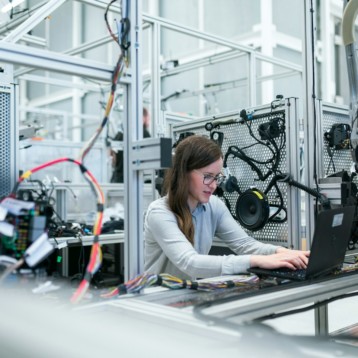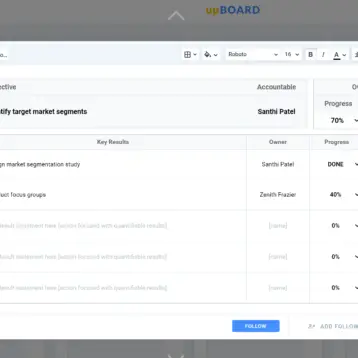Computers have become an essential part of our daily lives, but excessive heat can lead to performance issues and potential damage to the components. To ensure optimal functionality and longevity, it’s crucial to keep your computer cool. In this article, we will explore six easy and effective methods to cool down your computer, allowing you to safeguard its performance and extend its lifespan.
I. Maintain Proper Airflow and Ventilation
To keep your computer cool, focus on maintaining proper airflow and ventilation within your system. This can be achieved through regular cleaning to remove dust and debris that can block airflow. Additionally, positioning your computer in a well-ventilated area and using a cooling pad for laptops can help dissipate heat effectively.
To maintain proper airflow and ventilation in your computer, follow these steps: Check for obstructions and ensure that the computer is placed in an open area, away from walls or enclosed spaces. Neatly organize the cables inside the computer to create more air space and prevent the trapping of hot air. Regularly clean the air vents and fans using compressed air to remove dust and debris. For laptops, use them on a flat hard surface and consider using a cooling pad with built-in fans. Advanced cooling solutions like liquid cooling or upgrading the cooling system with more powerful fans or an AIO liquid cooler can also be beneficial. Additionally, it is useful to explore MLB team stats for a comprehensive understanding of the performance metrics of different teams in Major League Baseball.
II. Optimize Internal Cooling System
Upgrade your computer’s cooling fans to ensure efficient heat dissipation. High-performance fans can effectively reduce the temperature inside your computer, preventing overheating. Applying thermal paste on the CPU helps to improve the transfer of heat between the processor and the heat sink. Furthermore, installing additional case fans can enhance the overall airflow within your computer and maintain lower temperatures.
Optimizing the internal cooling system of your computer involves several steps. Firstly, applying high-quality thermal paste between the CPU and heatsink improves heat transfer and dissipates heat more effectively. Undervolting the CPU reduces power consumption and heat output while maintaining stable performance. Upgrading to efficient cooling solutions like the Corsair H100i Elite or liquid cooling can provide superior heat dissipation. Regularly cleaning the air vents and fans removes dust and debris that can obstruct airflow and compromise cooling efficiency. Adjusting system fan control settings in the BIOS allows you to fine-tune fan speed and optimize cooling based on your system’s needs.

III. Manage Software and Performance
Monitor and control CPU usage to prevent excessive heat generation. Close unnecessary background processes and applications that consume significant system resources, as they contribute to increased heat production. Utilize the Task Manager to identify resource-hungry applications and terminate them to alleviate the strain on your system.
Managing software and performance to prevent excessive heat generation involves using CPU monitoring tools to gain insights into CPU usage and temperatures. Additionally, configuring background processes by closing unnecessary ones and modifying system settings can help reduce strain on the CPU and minimize heat generation. Troubleshooting high CPU usage scenarios, such as addressing specific processes like Compattelrunner.exe, is also important. By implementing these measures, you can effectively manage software and performance, ensuring optimal cooling, system stability, and preventing excessive heat generation.
IV. Consider Hardware Modifications
To enhance your computer’s cooling capabilities, exploring hardware modifications can be beneficial. One option is to install a liquid cooling system, which efficiently dissipates heat and can significantly lower temperatures, particularly for high-performance systems. Upgrading your cooling fans to more powerful ones with higher RPM can improve airflow and enhance cooling efficiency. Additionally, incorporating heat sinks for intensive components like the graphics card or RAM modules effectively dissipates heat and prevents overheating. To maintain an optimal balance between cooling and noise levels, investing in fan controllers enables you to adjust fan speeds. Furthermore, ensuring proper cable management inside the computer case promotes improved airflow and better cooling performance.
V. Control Ambient Temperature
Create a conducive environment for your computer by keeping the room temperature moderate. Use air conditioning or fans to maintain a cool room temperature and prevent excessive heat buildup around your computer. Proper ventilation is key, so ensure that the room has good airflow and that there are no obstructions around the computer. Additionally, avoid placing your computer in direct sunlight, as it can raise temperatures and contribute to overheating. Positioning your computer in a well-ventilated area away from walls or enclosed spaces also helps maintain optimal airflow. Using a laptop cooling pad can also help dissipate heat and maintain lower temperatures for laptops.
VI. Regular Maintenance and Check-ups
Perform regular maintenance tasks to keep your computer in optimal condition. In addition to updating and maintaining device drivers, it is important to regularly clean the air vents and fans of your computer to remove dust and debris that can obstruct airflow and hinder cooling efficiency. Schedule professional cleaning and maintenance to ensure thorough cleaning and inspection of internal components. Regularly scan your computer for malware and viruses to protect against security threats and maintain system performance. Additionally, consider using disk cleanup tools to remove unnecessary files and free up storage space, which can help optimize overall system performance and reduce heat generation. By regularly performing these maintenance tasks, you can ensure that your computer operates at its best and stays cool and reliable.
Conclusion:
In conclusion, by implementing the six easy and effective methods discussed, you can effectively cool down your computer and ensure its optimal performance and longevity. Maintaining proper airflow and ventilation, optimizing the internal cooling system, managing software and performance, considering hardware modifications, controlling ambient temperature, and performing regular maintenance and check-ups are essential steps in preventing potential damage caused by overheating. By following these measures, you can create a conducive environment for your computer, enhance its cooling capabilities, and protect it from the negative effects of excessive heat. Ultimately, these actions will contribute to a cool and reliable computing experience while maximizing the lifespan of your computer.










